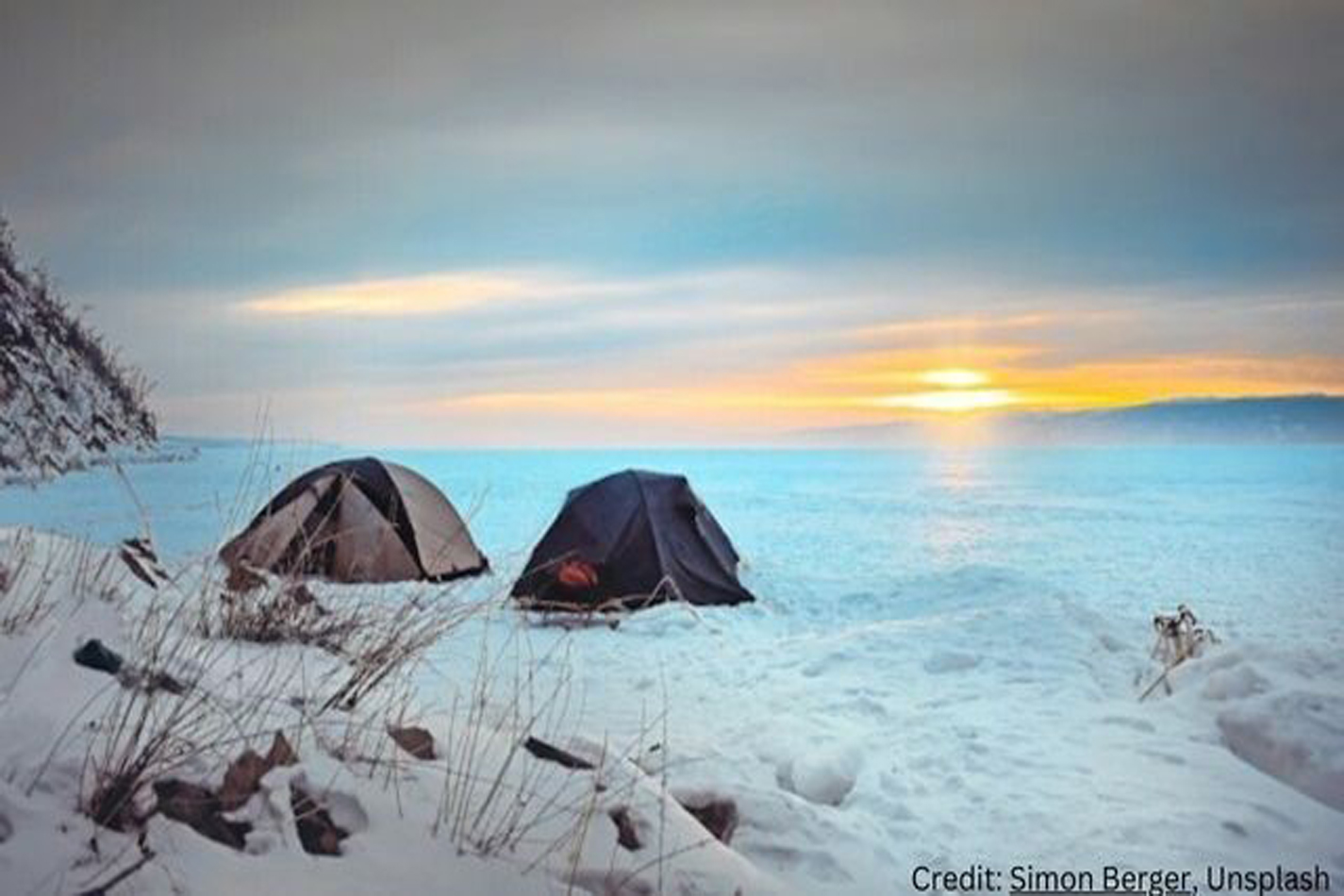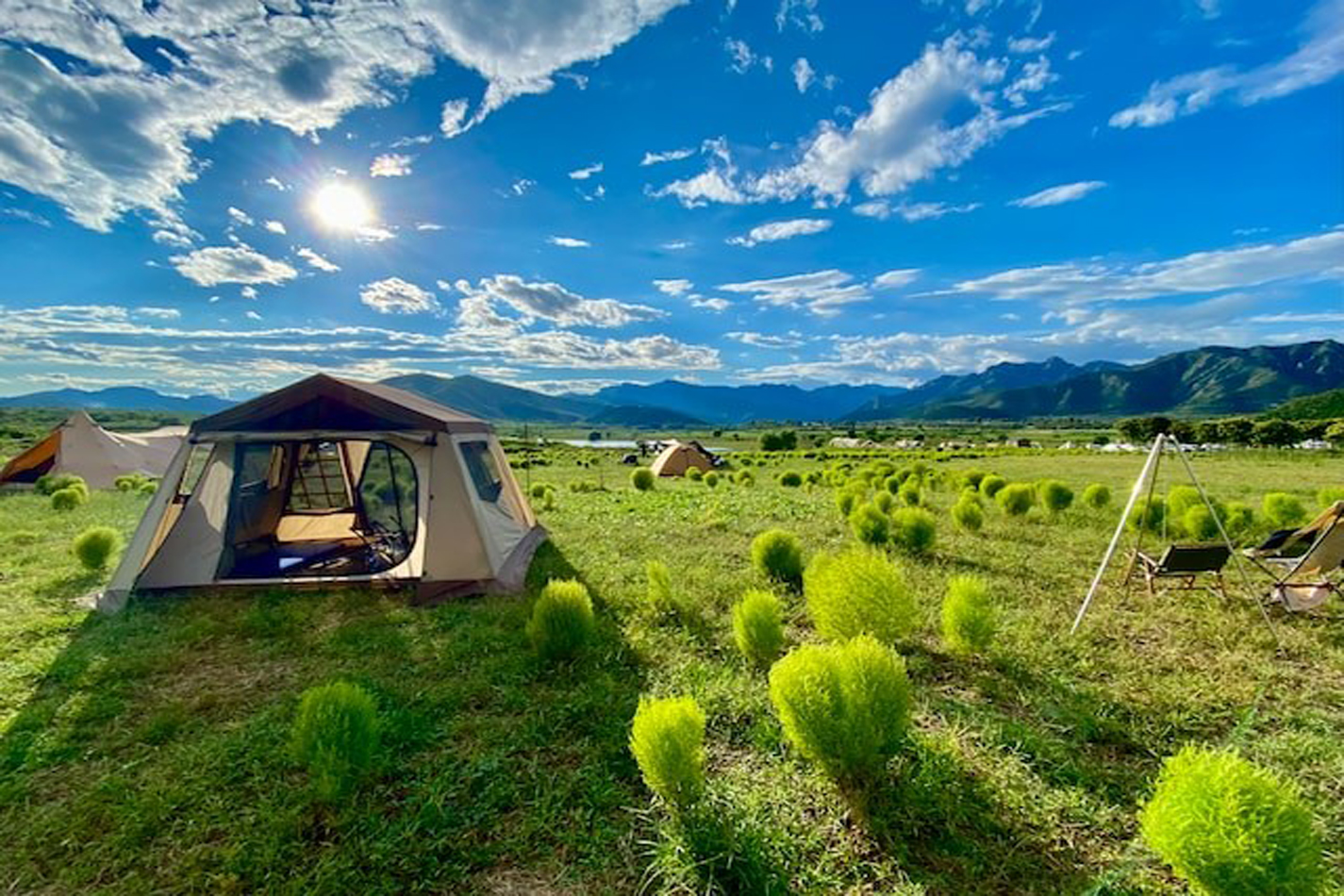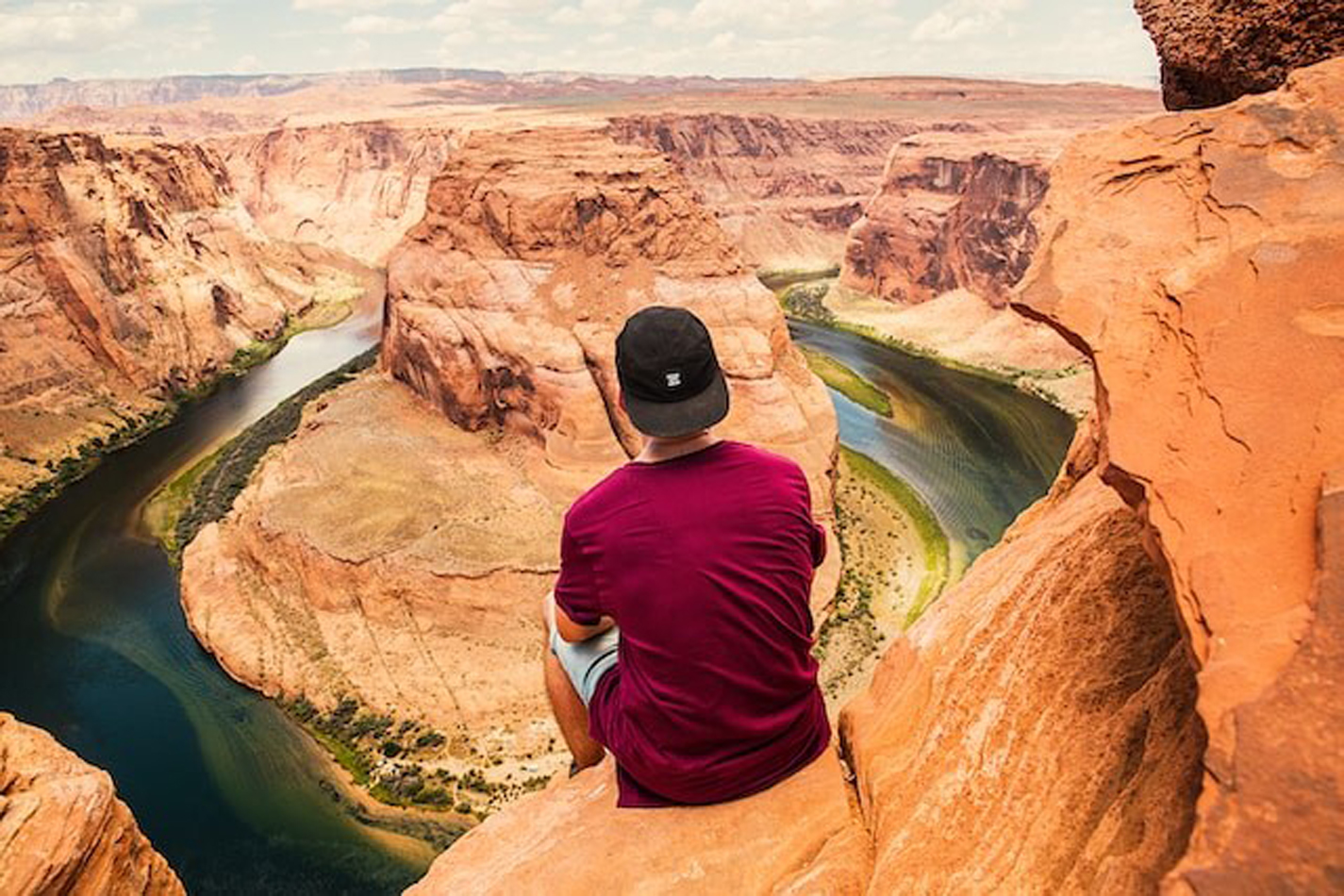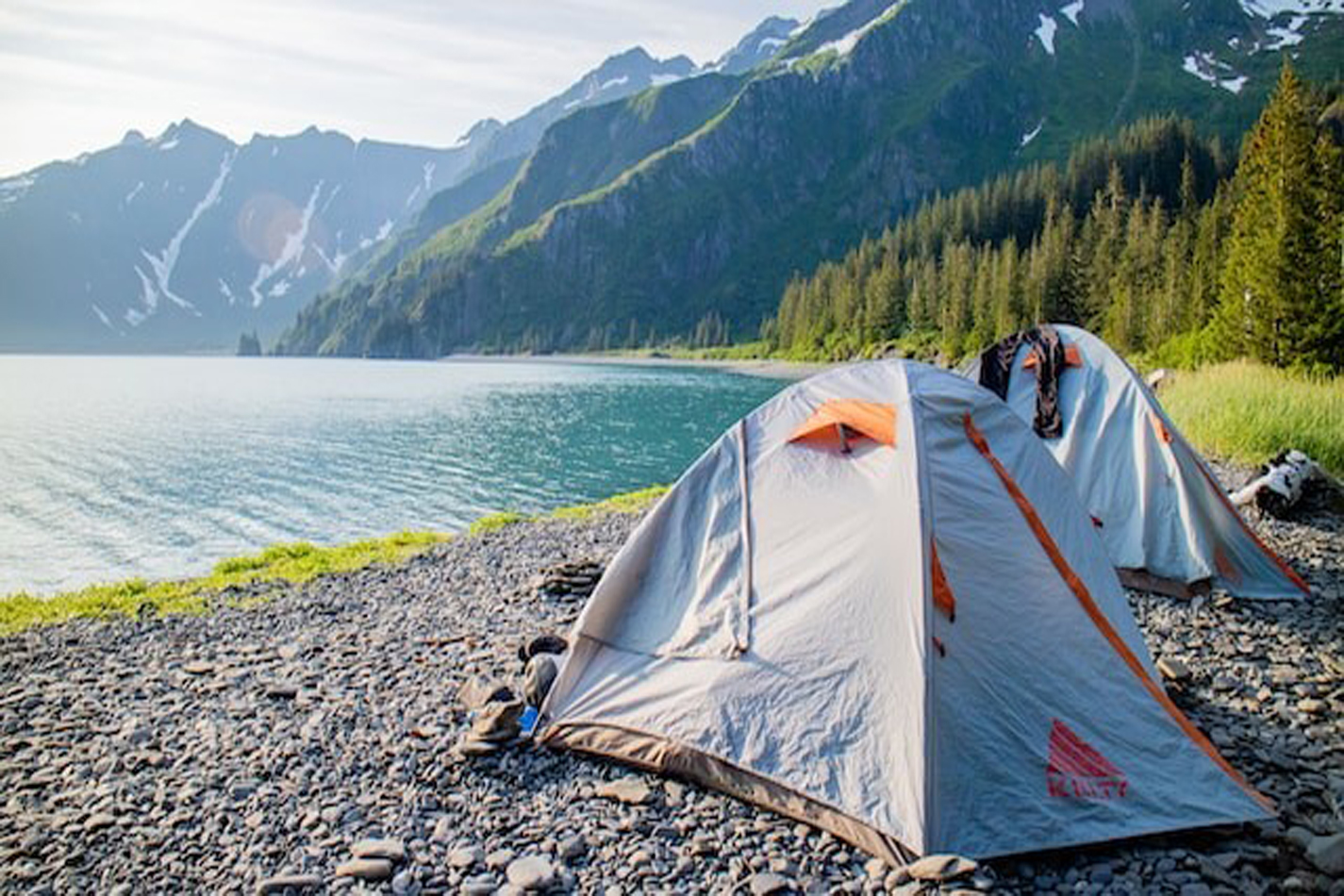Winter camping is an exhilarating adventure that brings a unique set of challenges and rewards. As the snow-covered landscapes beckon, many individuals are venturing into the world of winter camping for the first time.
However, for those accustomed to the milder conditions of summer or fall camping, the winter wilderness presents an entirely different set of challenges. The unforgiving nature of winter weather demands a heightened level of preparation and skill.
This comprehensive guide has been meticulously crafted through extensive research

and insightful interviews with seasoned winter campers spanning across the diverse landscapes of both the United States and Canada.
So, before you trade the warmth of your fireplace for the crisp winter air, consider arming yourself with the expertise needed to navigate the unique challenges that winter camping presents.
Our aim is to equip first-timers winter campers with essential tips and gear recommendations to ensure a safe and enjoyable experience in the cold wilderness.
Table of Content
- Getting Started with Winter Camping
- From Where and How to Get Started
- What Equipment and Gears Do I Need for Winter Camping?
- Essential Clothing for Winter Camping
- Essential Transportation Gears for Your Camping Journey
- How to Setup a Tent in the Winter
- Winter Camping Experience: Essential Tips for Movement, Comfort, and Enjoyment
- Food Choices for Winter Camping
- Cooking Essential Gears and Kitchen Setup
- Cooking Challenges in Winter Camping
- Safety Considerations and Tips for Winter Camping
Getting Started with Winter Camping
For those venturing into winter camping for the first time, we operate under the assumption that you possess a foundational understanding of camping basics, having previously enjoyed the outdoors in milder conditions, spanning from summer to fall.
It is anticipated that you already own essential camping gear, are familiar with suitable clothing for outdoor excursions, and have a grasp of basic camping practices, including food preparation and safety measures.
This guide aims to build upon this existing knowledge, tailoring it to the unique challenges and requirements presented by winter camping, ensuring a smooth transition into the realm of colder and more demanding environments.
From Where and How to Get Started
To initiate your foray into winter camping, consider beginning with a controlled and familiar environment. I recommend starting with a trial setup in your own backyard—an excellent way to acquaint yourself with the nuances of winter camping without venturing too far from the comforts of home. Pitch a tent and spend a night in your sleeping bag, simulating the conditions you'll encounter in colder climates.
Winter car camping is another option. Winter car camping offers a comfortable and accessible entry point into the world of cold-weather adventures. Start by ensuring your vehicle is well-equipped for winter conditions, with snow tires and appropriate maintenance. Choose campsites that allow for easy access and proximity to essential facilities.
Alternatively, choose a nearby location with a pre-planned retreat option, ensuring a safe escape if needed. It's crucial not to embark on this experience alone; having a camping companion not only enhances safety but also provides mutual support in adapting to the challenges of winter camping.
Additionally, engage in a day hike in a nearby snowy area to acclimate yourself to winter terrains, honing your skills and building confidence for longer excursions. This gradual approach allows you to master the essentials of winter camping, making the transition a rewarding and enjoyable journey.
What Equipment and Gears Do I Need for Winter Camping?
You probably have most of the gears for camping tucked away, but gearing up for winter camping requires a few additional essentials. For example, you might need:
Season Tent
While your regular tent may have seen you through fair weather, a 4-season tent is tailored for winter conditions. Its robust design and durable materials provide enhanced protection against snow, wind, and low temperatures, creating a cozy haven in the midst of winter's challenges.
Sleeping Bags
Upgrading your sleeping bag to an insulated one is a game-changer. Designed to withstand freezing temperatures, an insulated sleeping bag ensures a warm and restful night's sleep, vital for your overall well-being during winter camping.
For extremely cold environments with sub-zero temperatures, consider a sleeping bag rated well below freezing, preferably in the -20°F to 0°F (-29°C to -18°C) range. This ensures sufficient insulation to keep you warm even in harsh winter conditions.
Opt for a Bulkier Camping Sleeping Bag: For an extra layer of insulation, choose a bulkier camping sleeping bag to place over your existing one. This can provide additional warmth, especially when temperatures plummet. Consider using a synthetic bag as the outer layer to prevent your down sleeping bag from getting wet, ensuring it retains its insulating properties.
Layer Up with Bedding: Add a down comforter from your bed or a few fleece blankets to supplement your sleeping bag's insulation. For additional warmth, consider using a synthetic or silk sleeping bag liner. To create a cozy cocoon, you can even layer all three—comforter, blankets, and liner.
Synthetic materials are more resilient in damp conditions, making them an excellent choice for the outer layer. This helps protect your down sleeping bag from moisture, ensuring it stays dry and effective in maintaining warmth.
Sleeping Pads
In the realm of winter camping, your choice of camping mattress can be the difference between a frigid night and a cozy, restful sleep. Boosting insulation against the cold ground and snow is key, and here's where the strategic use of two pads becomes a game-changer. The thermal resistance of a camping pad, measured by its R-value, determines its warmth. The exciting news is that when you combine two pads, their R-values add up, creating a synergistic effect that enhances insulation and overall warmth.
For unparalleled warmth in a lightweight and packable sleep system, the go-to combination involves pairing a winter-grade air sleeping pad with reflective fabric on top of a closed-cell foam pad featuring a reflective surface. This dynamic duo not only maximizes insulation against the cold but also ensures a comfortable and efficient sleep setup.
Must-Have Tarp
Utilize a tarp or similar stuff as a protective layer to keep your gear dry while unpacking and organizing at your campsite.
Snow Clearance Made Simple
Adding a broom and shovel to your gear list is a smart move. Specialized snow-clearing brooms and shovels are available, but a household version works just as well. If bringing these items isn't feasible, don't worry - branches, twigs, or trekking poles can also be employed to efficiently remove snow.
“Pro Tip: Consider investing in specialty brooms and shovels designed explicitly for snow removal for optimal efficiency.”
Essential Clothing for Winter Camping
Invest in high-quality insulated clothing, including layers, waterproof outerwear, and insulated boots, to stay warm in freezing temperatures. The key to effective cold-weather dressing is layering, which involves three main layers: the base layer, insulating layer, and outer layer.
Layering is important. Choose moisture-wicking materials such as merino wool or synthetic fabrics like polyester or nylon. These materials effectively move sweat away from the skin, keeping you dry.
Opt for insulating materials like down or synthetic insulation. The insulating layer traps and retains heat close to your body. The thickness of this layer can be adjusted based on the expected temperature, allowing you to regulate your warmth.
The outer layer, or shell, should be waterproof and windproof. Look for materials like Gore-Tex or other breathable, waterproof fabrics. The outer layer protects you from wind, snow, and rain. It serves as a barrier against the elements, while still allowing moisture from the inside to escape, maintaining a balance between insulation and breathability. If you start to feel too warm, you can remove a layer to prevent sweating.
“Pro Tips: Avoid wearing cotton and jeans.”
Other Considerations:
Don't forget to wear a good-quality insulated hat and waterproof gloves or mittens. Invest in insulated and waterproof boots to keep your feet warm and dry. Additional accessories like neck gaiters, balaclavas, and snow goggles to protect your face from wind and snow.In the frosty realms of winter camping, it's not just the cold you need to combat - protecting yourself from sunburn and windburn becomes paramount. Keep lips supple and protected with moisturizing chapstick, countering the drying impact of winter winds. Apply it to exposed skin areas to create a protective barrier, guarding against the harsh effects of biting winds.
Harness the power of Vaseline as a versatile shield against windburn and a preventive measure for chafing. The winter sun may be less intense, but its UV rays can still wreak havoc on your skin. Even in winter, safeguard your skin with sunscreen, warding off the sun's UV rays and potential sunburn.
Essential Transportation Gears for Your Camping Journey
The choice of transportation becomes a pivotal factor in your overall experience. Consider these key options for moving through the snow-covered terrain with efficiency and ease:
Snowshoes and Skis:
When embarking on your inaugural winter camping trip, contemplate the use of snowshoes or cross-country skis. These gear choices facilitate smoother movement across snowy landscapes by providing increased surface area. Ideal for traversing moderate distances, snowshoes, and skis can be your trusty companions for exploring the winter wilderness.
Sled or Pulk:
For those planning longer journeys or carrying a substantial load, the addition of a sled or pulk to your gear arsenal is a game-changer. These invaluable tools offer an efficient means of transporting your equipment without exerting strain on your back or arms.
How to Setup a Tent in the Winter
Choosing the right winter camping location involves a thoughtful blend of accessibility, safety, and personal preferences.
Location Consideration:
Opt for locations with reasonable access to roads, especially if you're new to winter camping. This ensures easier transportation of gear and quicker exits if needed.
Site Selection:
Selecting a flat site for winter camping is a crucial decision that impacts your overall camping experience. Begin by assessing the snow depth, aiming for a location with enough snow for stability but not too deep to pose challenges.
Once you've identified the spot, take the time to pack down the snow where you plan to set up your tent and sleeping area. This packing serves multiple purposes—it creates a level surface for your tent, enhances stability, and helps prevent sinking into deep snow during your stay.
“Pro Tip: It also contributes to improved insulation against the cold ground.” Additionally, it aids in creating a stable platform for activities like cooking, ensuring a more comfortable camping experience.Essentials Gears for Snow Preparation:
A compact and lightweight snow shovel is an excellent tool for packing down snow. Look for collapsible or foldable designs that easily fit into your backpack. It can be used for clearing spaces around your tent, creating paths, and leveling the ground. Compact and easy to carry, ski poles or trekking poles can be utilized for packing down snow.
Invest in snow stakes or anchors designed specifically for winter conditions. These lightweight tools are easy to carry and can be used to secure your tent in the snow. They provide stability in windy conditions and help maintain the integrity of your campsite.
If you find yourself without snow stakes or anchors during winter camping, fret not - Digging trenches around the perimeter of your tent site can act as a substitute for stakes. The dugout snow provides a natural barrier, enhancing the stability of your tent. Ensure the trenches are deep enough to anchor the tent securely and prevent it from shifting.
You may also create snow piles around the tent corners to act as anchors. Simply gather snow and compact it into mounds at each corner. This method provides additional stability and helps anchor your tent without the need for specialized stakes. In addition, if you have extra gear or backpacks, use them as makeshift anchors. Securely bury the items in the snow around the tent perimeter. Ensure they are well-buried and firmly packed to serve as effective anchors against wind and movement.
“Pro Tip: Choosing gear that serves a dual purpose not only reduces the weight of your pack but also enhances the efficiency of your winter camping experience.”
Winter Camping Experience: Essential Tips for Movement, Comfort, and Enjoyment
Layering is Key:
Wear multiple layers to regulate body temperature. Start with a moisture-wicking base layer, add insulating layers for warmth, and finish with a waterproof and windproof outer layer like (Arc'teryx Cerium LT Hoody) Known for its exceptional warmth-to-weight ratio, this down jacket offers superior insulation without sacrificing packability. It's perfect for cold nights at the campsite).
Choose Appropriate Footwear:
Opt for insulated and waterproof boots (Salomon Quest 4D 3 GTX). These boots strike a balance between insulation and support, making them suitable for both hiking and camping. The GORE-TEX membrane ensures waterproofing and breathability) with good traction. Snowshoes or skis may be necessary depending on snow depth.
Mind the Snow Depth:
Be cautious of deep snow. Use snowshoes or create packed trails to make movement easier.
Stay Hydrated:
Cold air tends to be dry, so stay hydrated by drinking water regularly. Consider an insulated water bottle to prevent freezing.
Usability and Importance of Chairs and Tables in Winter Camping:
Sitting on a chair keeps you elevated from the cold ground, preventing heat loss from direct contact with snow or frozen surfaces. Chairs designed for camping (Helinox Chair One) are often lightweight and compact, making them easy to carry in your winter camping gear.
If possible, do carry a portable table for winter camping. Whether playing cards, sharing a meal, or enjoying hot drinks, having a stable surface enhances the communal aspects of winter camping. Try (REI Co-op Camp Roll Table).
Head Warmers for Winter Camping:
In winter camping, keeping your head warm is crucial for overall comfort and maintaining body heat. Opt for beanies made from merino wool or synthetic materials. These fabrics offer excellent insulation and moisture-wicking properties. Look for a snug fit without being too tight.
Balaclavas, Neck Gaiters, Fleece-Lined Headbands, Windproof Hats, Insulated Helmet Liners, Trapper Hats, Battery-Powered Heated Hats are some of the options to choose from.
Illuminating the Darkness with Headlamps and Lanterns:
As the winter night blankets the wilderness, the right lighting becomes a necessity for both safety and the sheer pleasure of exploring the snowy landscapes. Headlamps and Camping Lanterns play a pivotal role in shaping your winter camping experience.Tip: Look for headlamps with adjustable brightness levels and beam angles. Tip: Choose lanterns with built-in hooks or hanging features and with energy-efficient LED bulbs. Embracing the Chilled Mornings: As dawn breaks over your winter campsite, be prepared to encounter the brisk chill that defines early mornings in colder climates. Minimize exposure to the cold by swiftly transitioning from sleepwear to layered warmth. Embrace the power of layering Prioritize preparing a hot breakfast. A steaming cup of coffee or tea can be particularly invigorating.
Use the morning hours to prepare for the day's activities. Whether it's gearing up for a winter hike, setting out for snowshoeing, or simply exploring the snowy surroundings, engaging in physical activity generates internal warmth.
Nature's Call in Cold Weather: Before snuggling into your sleeping bag for a cozy night in the winter wilderness, consider the advantages of taking a bathroom break. Keep your bathroom breaks brief. Equip yourself with a reliable headlamp. Choose a designated bathroom spot at a suitable distance from your campsite.
Managing Runny Noses and Moist Face: One common issue is dealing with a runny nose and the moisture that accumulates on face coverings. Cold weather tends to make your nose run, and when you add a face covering, like a balaclava or mask, condensation becomes inevitable. Recognize that moisture build-up can lead to discomfort and potential chilling. Be prepared by bringing extra face coverings. Swap them out when one becomes damp to maintain dryness and warmth.
“Tip: Pack quick-drying towels or wipes to manage moisture on your face.”
Food Choices for Winter Camping
For winter expeditions, simplicity often rules with just-add-boiling-water meals. Keep it simple with items needing minimal prep and cleanup—dishwashing in the cold can be tricky. Soups and stews are warming, easy to prepare in large batches, and offer a mix of vegetables, proteins, and carbohydrates.
Foil packet meals, where ingredients are wrapped in foil and cooked over a campfire, are popular for their simplicity and minimal cleanup.
Oatmeal with Toppings is a warm and filling breakfast option. While not a complete meal, roasted marshmallows and s'mores are winter camping classics, providing a sweet and comforting treat around the campfire. Opt for high-fat foods; they act as your internal heater. In addition, expect fresh, meaty soups, and an array of hot beverages like tea and cocoa.
“Tip: For hikes, choose nibble-friendly snacks stored in pockets to prevent freezing.”
Cooking Essential Gears and Kitchen Setup
In snowy conditions, you can create a snow kitchen by compacting the snow to form counters and workspaces. A personal collapsible wood-burning stove serves as a sustainable and portable solution for cooking in winter. Plan your meals with the cold in mind. Opt for items that are easy to prepare and provide ample energy.
If your camping location is covered in snow, a portable snow melting system can be invaluable. This could be a small stove or heating element specifically designed for melting snow into water for cooking and hydration. Winter nights are long, and proper lighting is crucial for safe and efficient cooking. Pack a reliable headlamp or lantern to illuminate your outdoor kitchen. Ensure you have an ample supply of dry wood or other suitable fuel sources for your wood-burning stove.
“Pro Tip: Considering the increased fuel consumption in cold weather.”
Keep your hot meals warm by investing in insulated food containers. A portable cook set with nesting pots, pans, and utensils is convenient for winter camping. Gas stoves are a popular choice for winter camping due to their convenience and efficiency. However, extreme cold conditions demand a careful selection of the type of gas stove to ensure reliable performance.
Gas stoves commonly use propane, butane, or isobutane as fuel. Propane is a popular choice for winter camping due to its lower boiling point compared to butane and isobutane, making it more suitable for colder temperatures. When choosing a gas stove for winter camping, prioritize models designed for cold-weather performance.
“Pro Tip: Look for stoves that are explicitly labeled or marketed as winter-ready”
Opt for a liquid-feed gas stove rather than a vapor-feed model for extreme cold and are better equipped to handle low temperatures. Vapor-feed stoves may struggle in extreme cold as the vaporization process can slow down. Consider a remote canister stove for winter camping. These stoves have a separate fuel canister connected to the burner by a hose.
“Tip: Before cooking, preheat the stove by burning a small amount of fuel”
Winter camping often involves windy conditions. Choose a gas stove with built-in wind protection or carry a separate windscreen.
“Pro Tip: Both matches and lighters can serve as emergency fire-starting tools. It's advisable to carry backups lighter, ensuring redundancy in case one fails or becomes damaged”
Cooking Challenges in Winter Camping
Camping in winter offers the advantage of reduced concern about food spoilage. However, it comes with unique challenges. In extremely cold conditions, both water and food can freeze rapidly. Cold temperatures also extend cooking times and diminish the efficiency of certain fuel types. Winter may bring frozen or scarce water sources, impacting cooking and hydration. Additionally, washing dishes becomes challenging in freezing temperatures. Being aware of these challenges allows campers to plan effectively for a successful winter camping experience.
How to deal with these cooking challenges during winter camping, experts and experience campers recommend the following Tips:
- Keep water bottles insulated by placing them in thermal covers or wrapping them with insulating materials.
- Pre-cook some meals at home and freeze them. Reheating frozen meals requires less cooking time.
- Opt for fuels that perform well in cold conditions, such as white gas or canister stoves with isobutane-propane mixes.
- Ensure water containers are insulated or stored in an area less prone to freezing, such as the center of your backpack.
- Store critical items like fuel canisters, batteries, and electronics inside your sleeping bag or insulated clothing to prevent them from freezing.
Safety Considerations and Tips for Winter Camping
Winter Camping Safety: Precautionary Measures and Recognizing Cold-Related Conditions Keep an eye on weather forecasts. Sudden changes in conditions can impact safety. Be prepared for unexpected weather events. Have a reliable means of communication, such as a satellite phone or emergency beacon. Inform someone of your itinerary and expected return.
“Pro Tip: Carry a map and compass, even if you have a GPS. Electronics may fail in extreme cold”
Recognizing Cold Related Conditions:
Be prepared for frostbite, hypothermia, and other cold-related issues.
Hypothermia Signs:
Shivering, confusion, slurred speech, weakness, numbness, and clumsiness.
Action:
Get to a warm place, change into dry clothes, and consume warm beverages. Seek medical attention if severe
Frostbite Signs:
Numbness, tingling, pain, pale or hardened skin, and joint stiffness.
Action:
Warm the affected area gradually, avoiding friction. Do not rub the area. Seek medical help for severe cases.
Trench Foot (Immersion Foot) Signs:
Swelling, numbness, tingling, and discoloration of the feet.
Action:
Keep feet dry, elevate them, and warm gradually. Change into dry socks and footwear.
Snow Blindness Signs:
Pain, redness, tearing, and a gritty sensation in the eyes.
Action:
Wear sunglasses with UV protection. Rest your eyes in a dark environment.
Avalanche Awareness:
Prevention Understand avalanche risk factors, terrain, and weather conditions. Carry avalanche safety gear, including a beacon, probe, and shovel.



